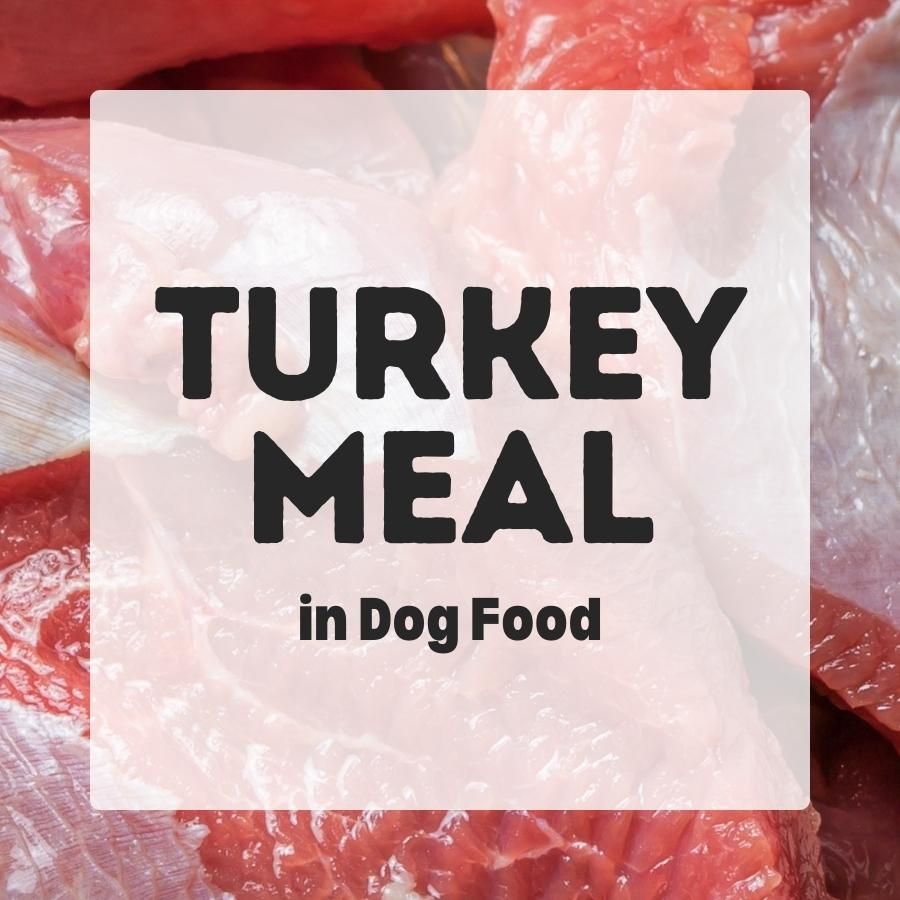Turkey meal is a rendered protein ingredient. In this article, you’ll learn what it is and why it’s in your dog’s food.
Contents
What is Turkey Meal?
Many brands of dog food use turkey meal in their formulas. But it’s a way less common ingredient compared to chicken meal.
While pet foods include over 197.000 tons of chicken meal each year, they use only about 18.000 tons of turkey meal[2].
About 37% of the live weight of turkeys is not used for human foods[4]. These are the by-products that go into pet food and other industries.
And most often, turkey raw materials get lumped together with chicken by-products, then processed and labeled as poultry meal.
Pure turkey meal is made by rendering slaughterhouse leftovers such as meat scraps and skin with or without bones or parts or whole turkey carcasses into a protein and mineral powder.
But it can not include added feathers, heads, feet, or viscera such as organ meats, undeveloped eggs, or intestines.
The process of rendering involves grinding the turkey tissues, heating them to high temperatures, and then pressing them to remove fat and moisture.
The separated fat can be collected and turned into turkey fat found in a small number of dog foods. Finished meals are often stabilized with antioxidants.
What is Turkey By-Product Meal?
Again, this is a rendered meal produced by recycling turkey raw materials into a nutrient concentrate.
Unlike turkey meal, the by-product meal can make use of whole carcasses, heads, feet and viscera.
Turkey viscera refers to the organs found in the body cavity such as the heart, liver, spleen, stomach, crop, and gizzard, but also intestines and undeveloped eggs.
But turkey by-product meal can not include added feathers.
Although many people believe by-product meals to be inferior, there is quite a bit of overlap between a turkey meal and a turkey by-product meal making this distinction a bit unnecessary.
Rendered meals not made from poultry raw materials such as beef meal or fish meal don’t even distinguish between ingredients that include certain by-products or not.
Turkey Meal Nutrients
The quality of the turkey meal can vary depending on the source of raw material and the manufacturing process.
Turkey meals are a slightly darker golden brown color with a richer aroma than chicken meals. However, there is little nutritional information available on the quality of rendered turkey.
According to a book published in 2006 by the rendering industry, turkey meal typically contains 62-65% protein and 18-25% ash while chicken meal is higher in protein and lower in ash[3].
They listed the more efficient meat removal from turkey carcasses as one possible explanation. In other words, there might be less meat and more bone in turkey meal than in chicken meal.
Since more pet food businesses started to include turkey meal in their formulas since then, the higher demand for pet food-grade turkey meal likely led suppliers to produce meals lower in ash.
A sample of turkey analyzed in 2015 had only about 14% of ash with 21% of crude fat and 62% crude protein[5].
Aside from its mineral content, turkey meal has an amino acid and fatty acid profile very similar to chicken meal with similarities in digestibility and palatability.
They concluded that turkey meal does not seem to have any unique nutritional features compared to chicken or poultry protein meals.
All in all, it’s still a great source of concentrated protein and a named ingredient interesting for everyone that prefers turkey over chicken or poultry in his dog’s diet.
Turkey Meal in Dog Foods
Turkey meal is a palatable ingredient and provides lots of digestible protein for your dog’s food.
Although it is not the same as fresh turkey, turkey meal is a good protein source for dry dog foods.
Turkey meal is a highly concentrated source of protein that is produced through a process called rendering.
This process helps to reclaim the nutritional content of turkey by-products, thereby creating a product that is rich in protein with little moisture.
As a result, only a small amount of turkey meal is required to provide the same nutritional value as a larger amount of fresh turkey.
Using fresh ingredients at the top of the ingredient list is a common practice. But the high moisture content of raw meat can result in a lower percentage of actual protein in the final product.
In contrast, turkey meal has already been dried and processed, providing a much higher protein content per weight compared to fresh turkey.
In addition to its nutritional value, turkey meal is also more cost-effective than using whole turkey meat.
Since turkey meal is recycled from leftover raw materials, it can be produced at a lower cost than fresh turkey meat.
This makes it a more affordable option for pet food manufacturers, and consequently, for pet owners.
Furthermore, turkey meal is a more stable and practical ingredient than fresh turkey meat. It can be easily transported and stored.
It is important to note that not all turkey meal is created equal, and it is crucial to buy dog food from a brand you trust.
Further Reading
[1] AAFCO Official Publication. Chapter 6. Free Access.
[2] Pet Food Production and Ingredient Analysis (PDF). 2020. Institute for Feed Education and Research (IFEEDER), North American Renderers Association (NARA), Pet Food Institute (PFI)
[3] Aldrich: Rendered Products in Pet Food. Published in Essential Rendering (pdf). 2006.
[4] David L. Meeker, Ph.D., MBA: Old is New—Rendering Utilizes all By-Products from the Meat Industry (pdf).
[5] Gray. Evaluation of Oxidized Rendered Protein Meals in Pet Foods. Master’s Thesis, Kansas State University. 2015.
